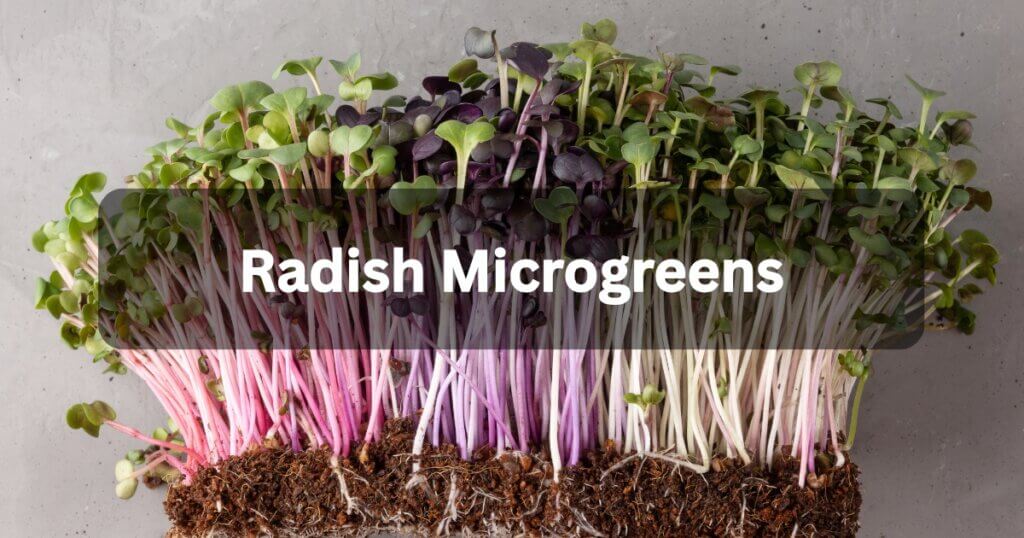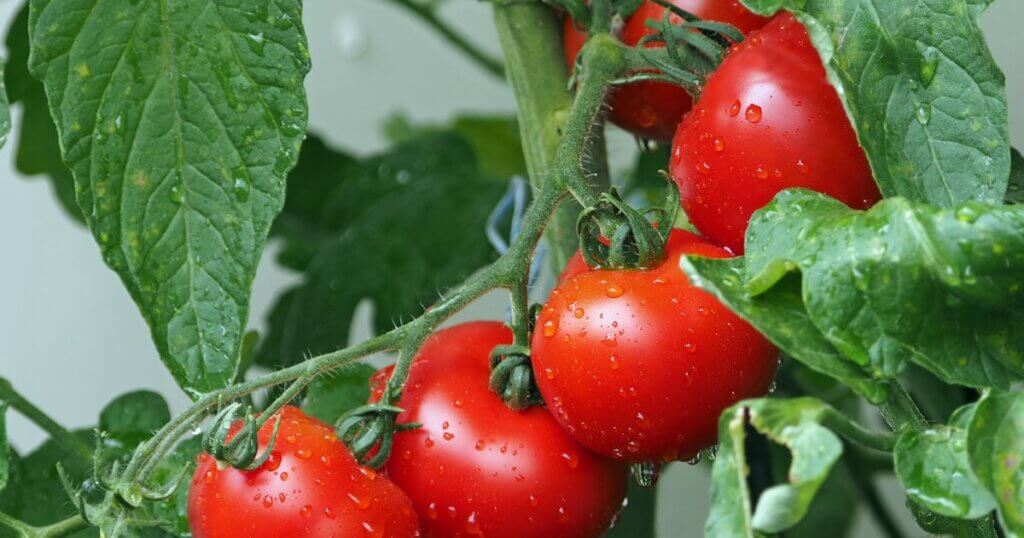The Ultimate Guide to Growing Radish Microgreens for Maximum Nutrition and Flavor

Growing radish microgreens is one of the fastest, easiest, and most rewarding ways to enjoy fresh greens indoors. Whether you’re a beginner looking for a quick win or a seasoned microgreen enthusiast seeking powerful flavor and nutrition, radish microgreens deliver both in spades.
These spicy little greens are loaded with antioxidants, grow in less than a week, and require minimal effort. In this guide, we’ll explore everything you need to know to grow delicious radish microgreens right at home.
Table of Contents
Why Radish Microgreens Are a Nutritional Powerhouse
Radish microgreens aren’t just cute mini plants—they’re nutritional bombs. They pack 4 to 40 times more nutrients than mature radishes. Surprised? Rich in vitamins A, B, C, E, and K, they’re also loaded with antioxidants, chlorophyll, amino acids, and essential minerals like calcium, iron, magnesium, and potassium. These nutrients help support digestion, detoxify the body, and boost the immune system.
What’s more, their vibrant flavor makes them a great addition to any meal.
The Different Varieties of Radish Microgreens You Can Grow
There’s more than one kind of radish microgreen! Each variety has its own unique color, flavor, and spice level. Here are some of the most popular types:
Daikon Radish Microgreens
Daikon radish microgreens have a mild peppery flavor and grow tall and crisp. Their gentle taste makes them ideal for beginners just starting with microgreens. They’re easy to grow and add a fresh crunch to dishes. Daikon microgreens thrive well in most indoor growing setups.
China Rose Radish
China Rose radish microgreens are known for their striking pink stems paired with bright green leaves. They offer a more intense and peppery flavor compared to milder varieties. This variety adds both color and a flavorful punch to salads and sandwiches. Their vibrant appearance makes them popular among microgreen enthusiasts.
Red Arrow Radish
Red Arrow radish microgreens feature beautiful red stems and spicy, flavorful leaves. They are especially excellent for adding a zesty kick to salads and garnishes. This variety grows quickly and produces dense, colorful greens. Their bold color and taste make them a favorite for culinary use.
Purple Radish
Purple radish microgreens stand out with their deep purple stems and leaves, adding eye-catching color to any dish. They bring a bold, sharp bite that complements milder greens well. This variety is both visually stunning and flavorful, perfect for creative plating. Purple radish microgreens are a great choice for those wanting something unique.
Each variety grows at a similar speed, so feel free to mix them for color and taste diversity.
How Fast Do Radish Microgreens Grow?
Speed is one of the biggest benefits of growing radish microgreens. Most varieties are ready to harvest in 5 to 7 days! Within 24 hours of sowing, you’ll see sprouting. By Day 3, you’ll notice tiny green leaves. By Day 5 or 6, you’ll have a tray full of crisp, flavorful greens ready for snipping.
If you’re impatient or want to impress someone fast—radish microgreens are the way to go.
What You’ll Need to Grow Radish Microgreens at Home
You don’t need fancy equipment or a green thumb. Here’s your basic setup:
- Seeds: Choose high-quality, non-GMO radish microgreen seeds.
- Growing tray: Preferably with drainage holes.
- Growing medium: Coco coir, hemp mat, or potting soil.
- Spray bottle: For gentle watering.
- Grow light (optional): For consistent growth and vibrant color.
- Weight or another tray: To block light for the first few days (called the blackout phase).
Microgreens Starter Kit
A complete kit including tray, grow mats, seeds, and instructions—perfect for beginners. You can showcase exactly what’s needed (tray, medium, seed) with one purchase link.
Step-by-Step Guide to Growing Radish Microgreens Indoors
Here’s the no-fuss method to growing radish microgreens:
Step 1: Prepare Your Tray and Medium
Start by filling your tray with about 1 inch of a moist growing medium, such as coconut coir, peat moss, or a seed-starting mix. Make sure the medium is evenly distributed and level across the tray to create a smooth surface for seed germination. Press down lightly on the medium to ensure good seed-to-soil contact but avoid compacting it too much, which can hinder root growth. A well-prepared medium sets the foundation for healthy microgreens.
10‑Pack Seed Sprouter Trays with Drain Holes
Reusable plastic trays with quality drainage holes—perfect for layering multiple crops and promoting airflow.
Step 2: Sow Your Seeds
Next, scatter your radish seeds evenly across the surface of the growing medium. Since radish seeds are small, use about 1 ounce per 10″×10″ tray to achieve a dense and uniform crop. Avoid piling seeds too thickly, which can cause overcrowding and poor air circulation. Taking the time to distribute seeds carefully ensures even germination and reduces the risk of mold.
Step 3: Mist and Cover
After sowing, mist the seeds gently but thoroughly with water to moisten them without washing them away. Then, cover the tray with another tray, a board, or a dome to block out light, creating a dark and humid environment. This darkness triggers faster and more uniform germination by mimicking natural soil conditions. Maintaining moisture during this phase is crucial for healthy sprout development.
Step 4: Germination Phase (Day 1–3)
Keep the tray covered during the first 2–3 days and mist the seeds once or twice daily to maintain a consistently moist environment. You should start to see tiny sprouts emerging around Day 2 or 3, signaling successful germination. Avoid overwatering, which can cause seeds to rot or develop mold. This phase requires close attention to moisture levels and air circulation to ensure healthy seedlings.
Step 5: Light Phase (Day 4–7)
Once you see sprouts, remove the cover and move the tray to a well-lit area, such as under a grow light or near a bright window. Exposing the microgreens to light encourages strong, healthy growth and prevents them from becoming leggy or weak. Continue misting as needed to keep the medium moist but not soggy. Proper lighting and moisture balance during this phase produce vibrant, nutritious microgreens.
Mars Hydro Full‑Spectrum LED Grow Light
Powerful yet energy-efficient LED ideal for small indoor setups. Full spectrum encourages strong stems and vibrant colors, and expert sources recommend LED lighting for microgreens
Step 6: Harvest Time!
By Day 6 or 7, your microgreens should have grown 2–3 inches tall with open, healthy leaves ready for harvest. Use clean scissors to cut the microgreens just above the growing medium, taking care not to disturb the roots if you want to regrow. Harvesting at the right time ensures the best flavor and maximum nutrient content. Enjoy your fresh microgreens in salads, sandwiches, or as a garnish!
How to Store Radish Microgreens After Harvest
Once harvested, radish microgreens are best eaten fresh. But if you need to store them:
- Wrap in a paper towel and seal in an airtight container.
- Store in the fridge for up to 5–7 days.
- Don’t wash until ready to use to prevent spoilage.
Creative Ways to Use Radish Microgreens in Meals
Radish microgreens aren’t just pretty—they’re punchy and flavorful. Here’s how to use them:
- Toss in salads for a peppery crunch.
- Layer on sandwiches and burgers for extra texture.
- Top soups and tacos for added nutrition and color.
- Blend into smoothies for a spicy kick (yes, really).
- Garnish avocado toast or scrambled eggs.
They’re so versatile, you’ll wonder how you ever cooked without them.
Tips for Getting the Best Yield and Flavor
- Soak seeds overnight (optional but can speed germination).
- Use a blackout dome for strong root development.
- Water from the bottom to avoid mold.
- Harvest before true leaves form to get the best texture and taste.
- Rotate trays under light to avoid leaning.
Growing Radish Microgreens Without Soil
You can grow radish microgreens hydroponically using a hemp mat, grow pad, or paper towel.
This method is:
- Cleaner
- Soil-free
- Ideal for countertop systems
Just ensure you keep the mat moist but not soaking wet. It’s perfect for kitchens with limited space.
How to Scale Up Your Microgreens Setup for Profit
Thinking of selling radish microgreens? Great idea!
Restaurants, health stores, and farmers’ markets love them.
Tips:
- Use 10″×20″ trays to grow at scale.
- Invest in tiered racks and LED grow lights.
- Package in eco-friendly clamshell containers.
- Build a local brand with a focus on freshness and health.
It’s a low-cost, high-margin crop to start your microgreens business.
Seed‑Starting Trays (6‑Pack)
Affordable, stackable trays are ideal for growing multiple 10″×20″ trays simultaneously—great for market growers.
Conclusion
Radish microgreens are a grower’s dream because they grow quickly and deliver bold, spicy flavor. They’re packed with nutrients, making them a healthy addition to any meal. Perfect for both beginners and experienced gardeners, they require minimal space and effort. All you need is a simple tray, some seeds, and a little water to get started.
So go ahead, give it a shot. In just one week, you could be snipping your way to healthier meals, one spicy green at a time.
Other Useful Resources Related To Radish Microgreens
- Nutritional Benefits of Radish Microgreens
Radish microgreens contain 4 to 40 times more nutrients than mature radishes. Learn more here: Radish Microgreen Nutrition Guide – Home Microgreens - Step-by-Step Guide to Growing Microgreens Indoors
This beginner-friendly guide covers tools, planting, watering, and lighting: How to Grow Microgreens Indoors – Simply Living Well - Varieties of Radish Microgreens You Can Grow
Explore different radish microgreen types like China Rose, Daikon, and Purple Radish: Types of Radish Microgreens – Microgreens World - Proper Storage Techniques for Microgreens
Keep your harvest fresh and crisp with these storage tips: How to Store Microgreens – Home Microgreens - Creative Culinary Uses for Radish Microgreens
Get recipe inspiration and discover how to incorporate radish microgreens into your meals: Using Radish Microgreens in Recipes – RevoGreen







